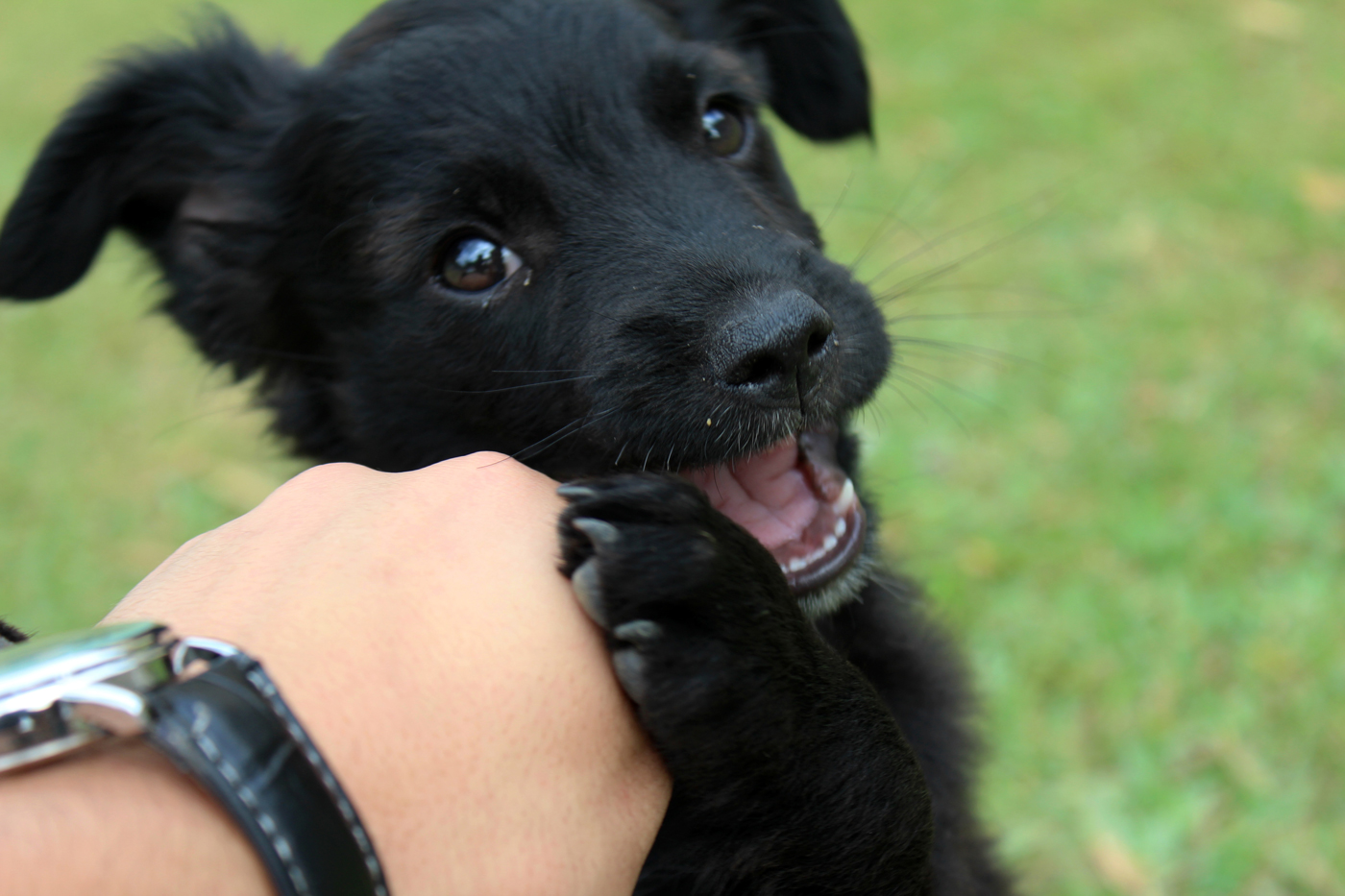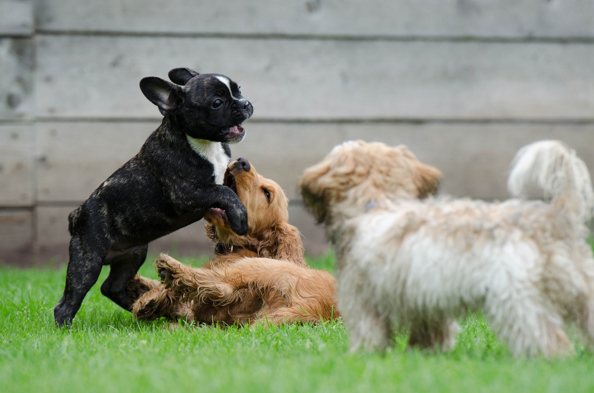How to stop your dog from biting and mouthing
16th July, 2020
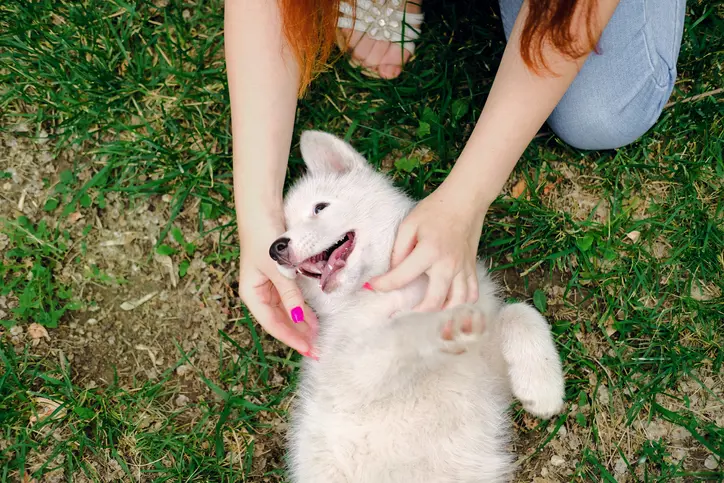
Most pet owners don’t enjoy dogs who bite, chew and mouth their hands, limbs or clothing during play.
What started off as cute when the puppy was 7 weeks old is significantly more painful and likely to cause injury when the dog is fully grown. And as a pet parent, it’s up to you to teach them the difference between right and wrong.
If you watch dogs or puppies playing together, you’ll notice they use their mouths to interact and investigate the world.
So, when they’re being played with or petted by you, they’ll usually want to bite or ‘mouth’ your hands. With puppies this is rarely aggressive behaviour and they won’t intend to hurt you.
However, because dogs and puppies are programmed to display this type of behaviour amongst themselves it’s difficult to stop completely. You’ll need to modify it to something more appropriate.
Training your dog to obey basic commands is just the first step to being a responsible pet owner. Having pet insurance in place could help cover the costs if there are any accidents or mishaps.
Why would a dog bite?
Even the calmest of domesticated dogs still have natural instincts. And if they feel threatened, they can bite. So what might provoke this aggressive behaviour?
-
A dog may be defending itself, its home, or a member of its pack (whether a human or another dog).
-
Being woken up unexpectedly or being suddenly approached from behind can provoke a dog to bite.
-
Running away, even during play, can trigger a predatory pursuit in some breeds.
-
A dog that is frightened, for example by being abused and abandoned or by a loud noise, is capable of biting anyone who approaches it.
-
A dog who isn't feeling well or is in pain can also react aggressively even towards trusted people.
Warning signs a dog is about to bite
Understanding your dog’s body language is vital as dogs often exhibit specific warning signs before biting. Stay aware of these as a dog owner and when interacting with any dog.
These include:
-
Yawning, licking lips or avoiding your eye – an early sign that a dog might be feeling uncomfortable.
-
Growling, snapping and showing teeth – the most direct way of showing they are uncomfortable and may bite.
-
Wagging tail – can be confusing. Look for a tail raised high, slowly wagging while the body stays perfectly still.
-
Rigid body – a tell-tale sign of trouble.
-
Raised fur – the fur on its neck or back may stand up on end if a dog feels threatened.
-
Showing the whites of their eyes – maintaining an intense and direct eye contact with a perceived threat results in the whites of the dog’s eyes showing as they move their head but not their eyes.
How to discourage mouthing and play biting
Despite all the encouragement in the world, sometimes a more direct method is needed to discourage unwanted biting behaviour. There are many techniques you can use, but here are just three.
-
Time-outs are a popular non-contact method of discouragement. Your dog or puppy craves attention so try to teach them that mouthing and biting turns off any attention from you. If your dog starts to nip then yell ‘Ouch’ or otherwise tell the dog you’ve been hurt. Then ignore the dog. Perhaps you can leave the room or leave the dog alone in a quiet safe place. Once the dog is calm you can begin to interact again.
-
Mouthing can also be discouraged by loosely taking hold of their lower jaw when they’ve nipped your hand. Don’t squeeze too hard, but gently hold on to their mouth until they pull away. After several seconds let go. If the dog licks your hand or ignores it then praise them. If they take your hand in their mouth again then repeat the procedure. Don’t repeat the procedure more than three times in any 15-minute period. For more information on why a dog may lick you is over on our site.
-
Consider using a taste deterrent to make a link between mouthing your hand and something unpleasant. Perhaps spray something bitter tasting on your hands or clothes (or wherever they prefer to chew you). Or wear gloves coated with something unpleasant. Make sure you praise them when they eventually let go. Two weeks is usually more than enough time to put off even the most mouthy of dogs!
Whichever of these techniques you choose it’ll have little effect if you haven’t already taught your dog or puppy the right basic commands.
How to teach alternatives to mouthing and play biting
The RSPCA recommends that the best way to discourage playful biting and mouthing is to redirect the chewing action onto other more acceptable objects and activities.
A chew toy or bone is a popular substitute for your fingers or toes. Be careful when using a rawhide chew bone (or anything else that can break into pieces) to monitor a puppy to prevent choking.
Many dogs become excited when you pet and stroke them. If this leads to mouthing then distract your dog by feeding them small treats from your other hand.
This is a good way to get the dog used to not mouthing when being petted. Alternate which hand pets and which hand holds the treats.
Rather than wrestling using your hands, play games such as fetch with your dog. These non-contact forms of play are a good way to teach your pup to not mouth.
If you’re playing fetch or tug-of-war then you’ll need to spend some time teaching your dog to play safely. Eventually your pooch will learn to look for a toy to play with when it feels the need to mouth.
As part of good canine care, it’s important to teach your dog impulse control.
A good response to commands such as ‘sit’, ‘wait’ and ‘leave’ are invaluable for many situations beyond unwanted mouthing and biting, like when you’re out walking or meeting children for the first time.
Ankle biting can be a particular hazard while moving around the house. A good tactic is to keep a chew toy handy in your pocket.
That way when the mouthing happens you can stop it and give the toy instead. When the dog takes the toy, you can praise and keep moving.
Repeat these steps until your dog gets used to you moving around without feeling the need to grab your feet. Providing a varied range of interesting chews and toys will be far more enticing than you or your clothes.
Many dogs love to play with other friendly dogs. So try to set up a doggy play date. Your furry friend will expend lots of energy playing with them so won’t be so keen on rough play with you when you get home.
However, before doing so be sure to take out an insurance policy for your pet to prevent being stuck with vet bills if the play gets too rough or they pick up an illness from their new friend.
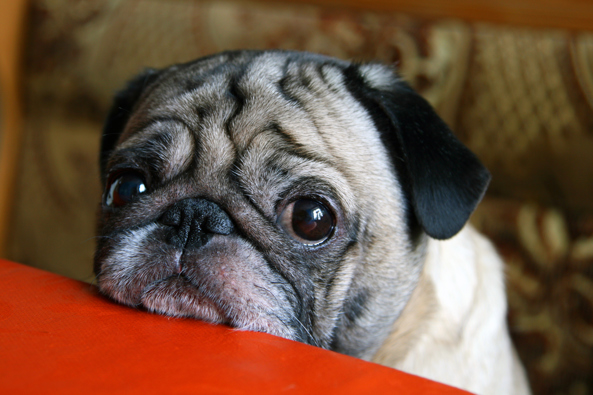
Playful mouthing or aggression?
It’s vital for everyone’s safety to be able to differentiate between playful mouthing and more aggressive behaviour.
If it’s suspected a dog is showing signs of aggression rather than mouthing or play biting then contact the Purely Pets 24-Hour Helpline for advice or get in contact with a dog behaviour expert, who’ll advise on the most appropriate course of action.
It’s important the behaviour expert is someone with the appropriate knowledge, skills and experience to treat the dog. Visit RSPCA to find out more.
Jumping up
Along with mouthing and play biting, jumping up is also a common cause for concern among puppy and dog owners.
Unfortunately pushing the dog away isn’t usually successful in changing the animal’s behaviour long term, as it’s still getting what it is looking for – your attention. Instead, when your dog or puppy jumps up:
-
Fold your arms, turn away and say “off”.
-
Keep turning away from the dog until its paws remain on the ground, then quietly give praise and perhaps a treat. Use the ‘sit’ command if your dog has learnt that.
-
If the dog jumps up again after praise then simply turn away and repeat. Remember to keep the praise subdued.
Once your pet has learnt not to jump up, make sure you reward their behaviour when they do come and sit quietly.
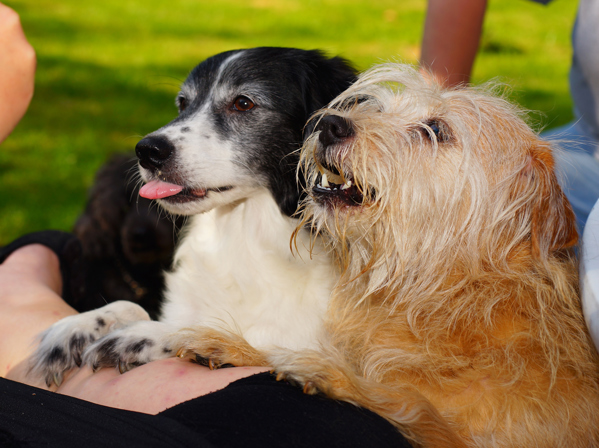
Keeping children safe around dogs
For children, there are many benefits to building a bond with a pet. Taking care of a dog is a wonderful way of teaching a child to take responsibility, express empathy, get some exercise and to have fun.
Dogs can also significantly help to raise children's self-esteem. However, it’s difficult for younger children to remember many of the tips outlined here and recognise signs of potential danger.
Make sure your dog is supervised at all times when children are around.
Training and socialisation
It’s the responsibility of you as the dog owner to train your dog and keep it under control. If your dog bites, then it’s your responsibility.
Basic training is a must and this should be reinforced throughout its life. Joining a dog training class is the ideal place to start.
Make sure your pup is well socialised with other animals. Allow your dog to meet different types of people, including children, people with disabilities, and older people.
-
Expose your dog to various situations such as other dogs, loud noises, large machines, bicycles etc.
-
Pay close attention to your dog and watch for when things may lead to aggression.
-
Don't discipline your dog using physical, violent, or aggressive punishment. Instead choose positive reinforcement.
-
Know your dog well before letting it off its leash.
-
Keep your dog in sight at all times.
-
If you suspect your dog has fearful or aggressive tendencies, always warn others before they approach.
7 steps to treating a dog bite
Whether it occurs as part of a playful game with your pooch or if another dog attacks unexpectedly you can suffer a nasty bite from a dog.
The primary concern from most bites is the risk of infection so act quickly if you’re bitten.
If a dog bites you, the NHS recommends you take these steps straight away:
-
Wash the wound with mild soap, and run warm water over it for a couple of minutes.
-
Encourage the wound to bleed slightly by gently squeezing it, unless it's already bleeding freely.
-
Remove any objects from the bite, such as teeth, hair or dirt.
-
If the wound is bleeding heavily, put a clean dressing over it and apply pressure.
-
Take painkillers if you're in pain, such as Paracetamol or Ibuprofen if you’re not allergic.
-
Seek medical advice, unless the wound is very minor.
-
If the bite has severed a body part, wash it with tap water, wrap it in clean tissue, and store it in a plastic bag surrounded by ice if you can and seek emergency medical attention.
Get a pet insurance quote from Purely Pets
Whatever behaviour concerns you have with your loyal friend, you’ll always want to give them the very best in veterinary care – but that won’t be cheap.
Fortunately, if you’ve taken out insurance for a pet arranged through Purely Pets you’ll get cover for vets’ fees from £1,000 to £15,000 per year, depending on the cover level you’ve chosen.
We’ve got 15 cover levels of lifetime cover for your pet, depending on your budget and your pup’s needs. You can choose an excess level starting from just £60.
Special diets and complementary treatments are also included in all pet insurance policies, giving you a wide choice of options for keeping your pet healthy throughout its lifetime.
We also offer a 24-Hour Vet Helpline, so you can get advice, reassurance, or answers for your canine questions at any time. And our online policy management portal gives you greater flexibility in managing your policy at a time that suits you.
Contact Purely Pets for a pet insurance quote today to give your precious pet the protection they deserve.
Helpful Pages
Recent Posts
Pet Insurance Quote
- 98% claims paid *
- Claims paid directly to vets
- 24/7 vet video consultations
- Interest free monthly payments
